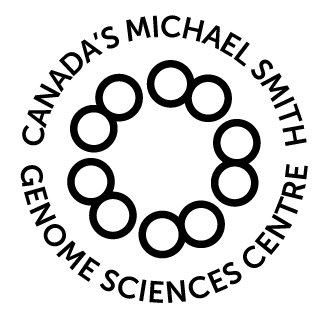Art of the Personalized Oncogenomics Program
In research the horizon recedes as we advance, and is no nearer at sixty than it was at twenty. As the power of endurance weakens with age, the urgency of the pursuit grows more intense ... And research is always incomplete.
— Mark Pattison (Isaac Casaubon)
contents
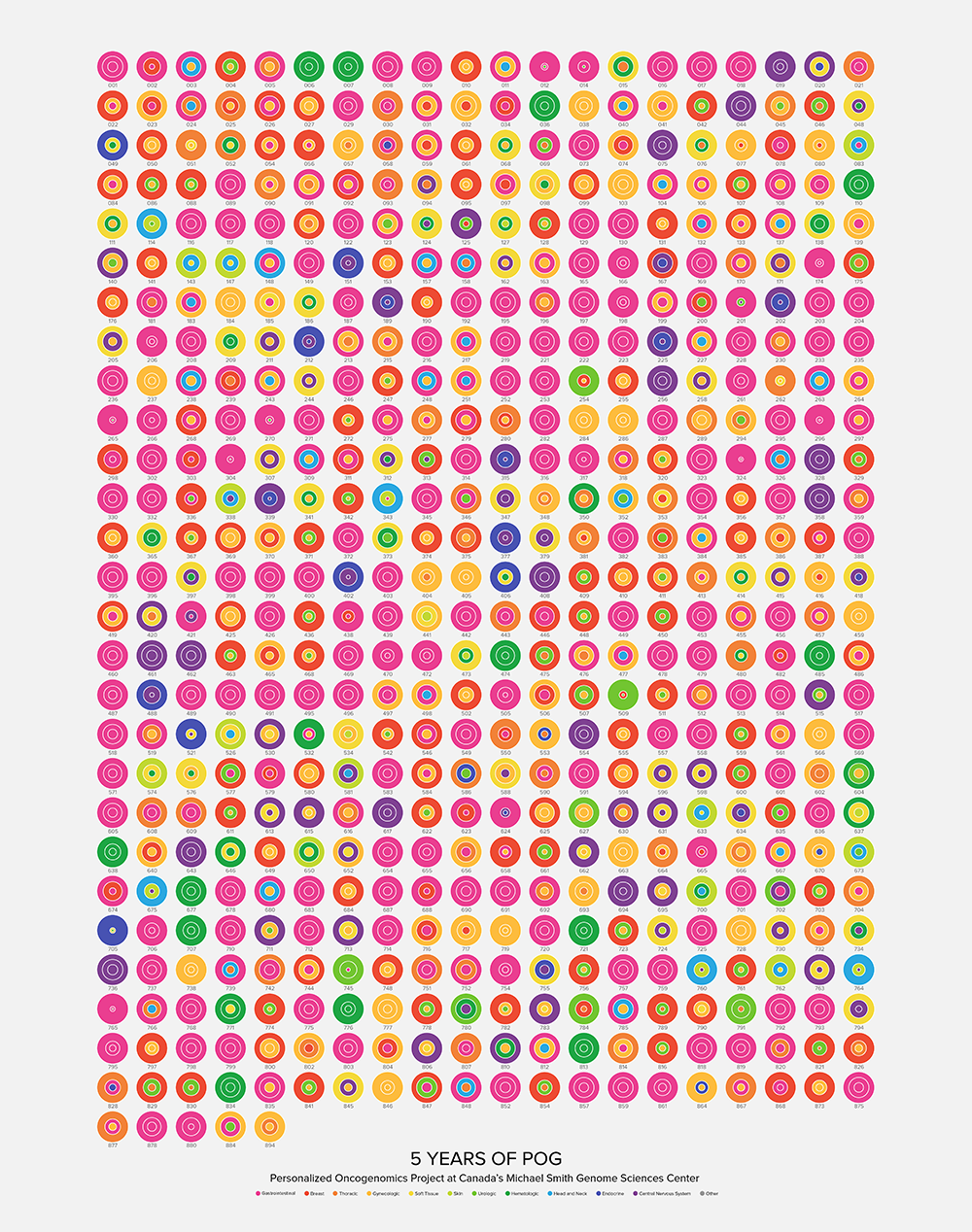
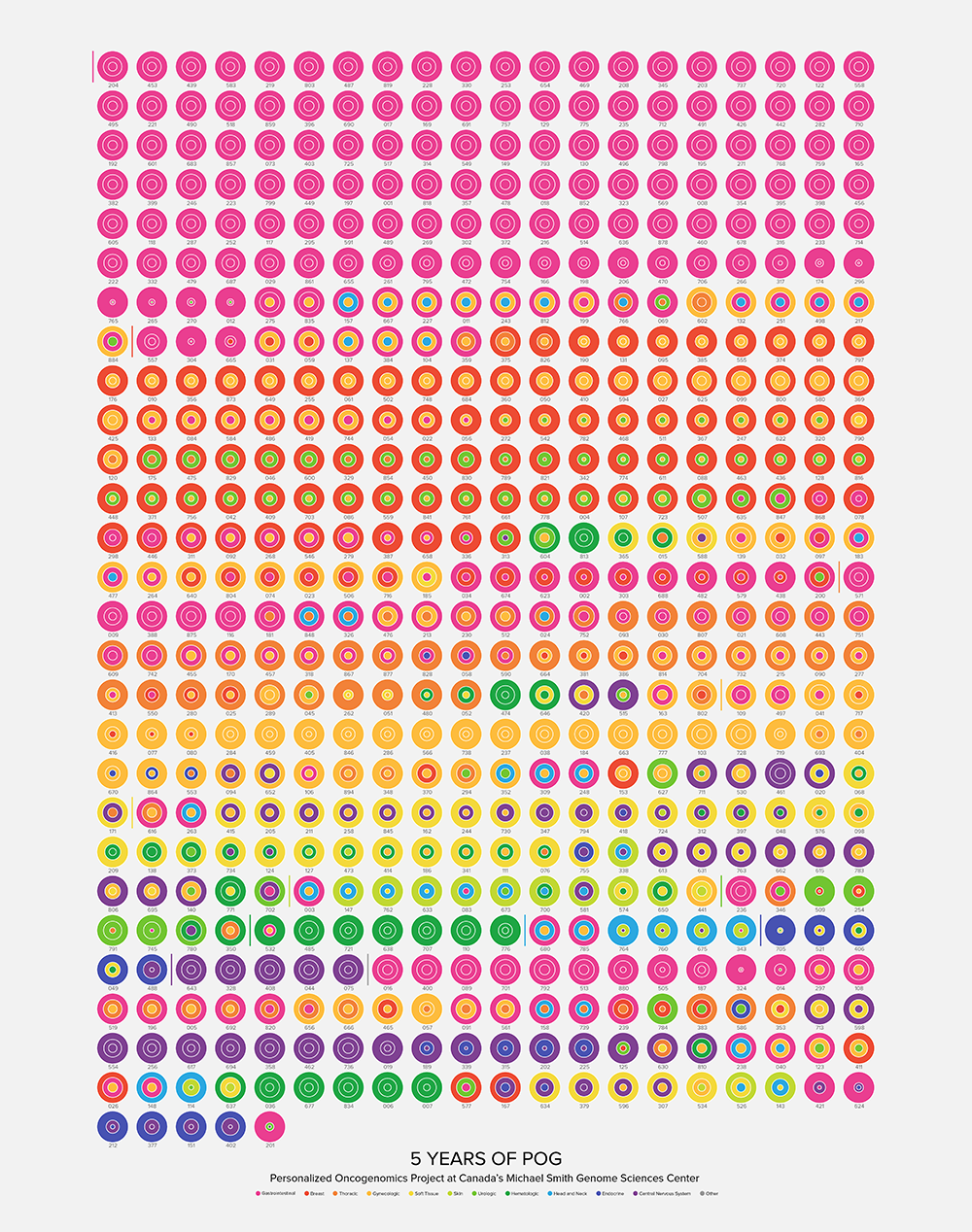
As individuals, we all have slightly different genomes. If you compare the genomes of two people, you will find about 3 million base pair differences, which is about 0.1% of the genome.
This variation exists not only within the population but potentially also, to a lesser extent, among our cells, which number around 40 trillion. That's roughly 10,000 cells for each base in your 3 billion base genome. And each has a role to play.
| POG cases, by tissue type | |||
|---|---|---|---|
| n | % | ||
| Gastrointestinal ● | 141 | 25 | |
| Breast ● | 138 | 25 | |
| Thoracic ● | 57 | 10 | |
| Gynecologic ● | 45 | 8.3 | |
| Soft tissue ● | 44 | 8.1 | |
| Skin ● | 11 | 2.0 | |
| Urologic ● | 8 | 1.5 | |
| Hematologic ● | 7 | 1.3 | |
| Head and neck ● | 6 | 1.1 | |
| Endocrine ● | 5 | 0.9 | |
| Central nervous system ● | 5 | 0.9 | |
| Other ● | 78 | 14 | |
| ALL | 545 | ||
One consequence of this complexity and variation is that changes in the genome (through mutation or other processes) can have very different effects, depending on both the change and the genome. Cancer is a phenomena in which cells' ability to organize themselves as they divide is altered due to changes in the genome. It is an incredibly complex biological phenomenon—considering all the genomes in the population and all the possible changes that may arise, there is truly an inexhaustible number of ways in which the genome can break.
Cancers are classified according to their site of origin, such as lung, breast, liver, or colon. This is a coarse grouping—within each group there are many subtypes with differences in response to treatment and overall behaviour.
The design of the POG art highlights the diversity and similarity among cases. The diversity is what makes the study of cancer difficult and the similarities are what makes inference possible.
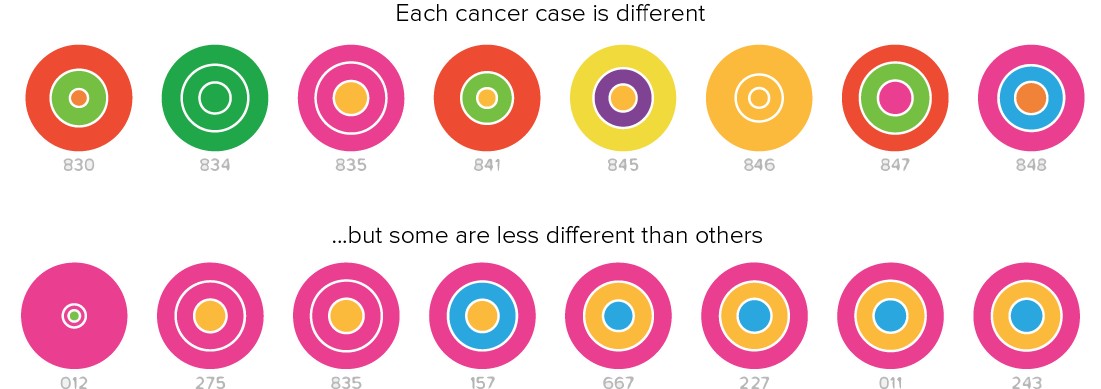
Each case is represented by three concentric rings. The width of each ring represents the extent to which the case is similar (as measured by correlation) to cancers of the type encoded by the color of the ring (see Methods).
In additional to the posters, I've created remixes for your desktop at 4k resolution.
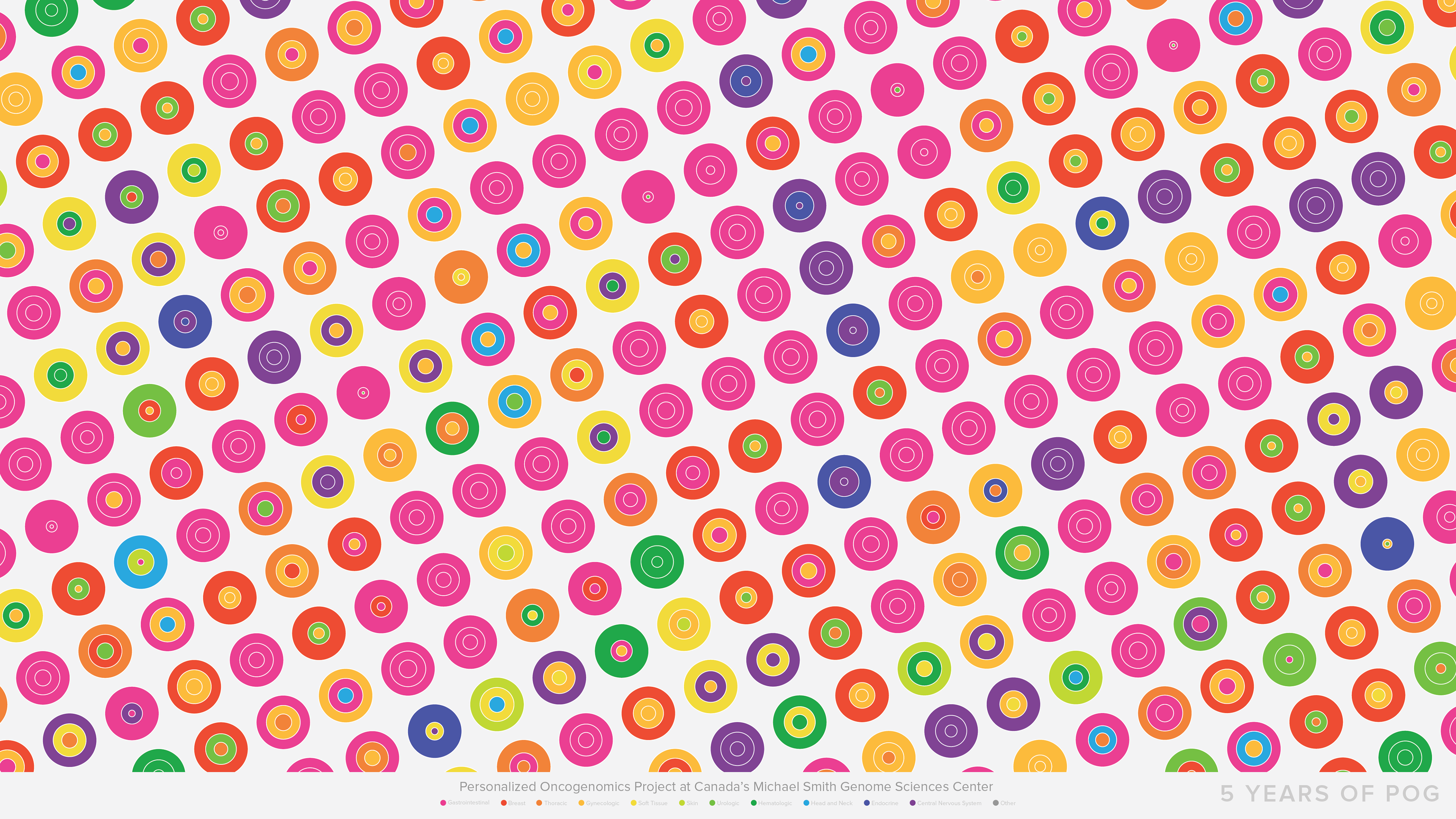
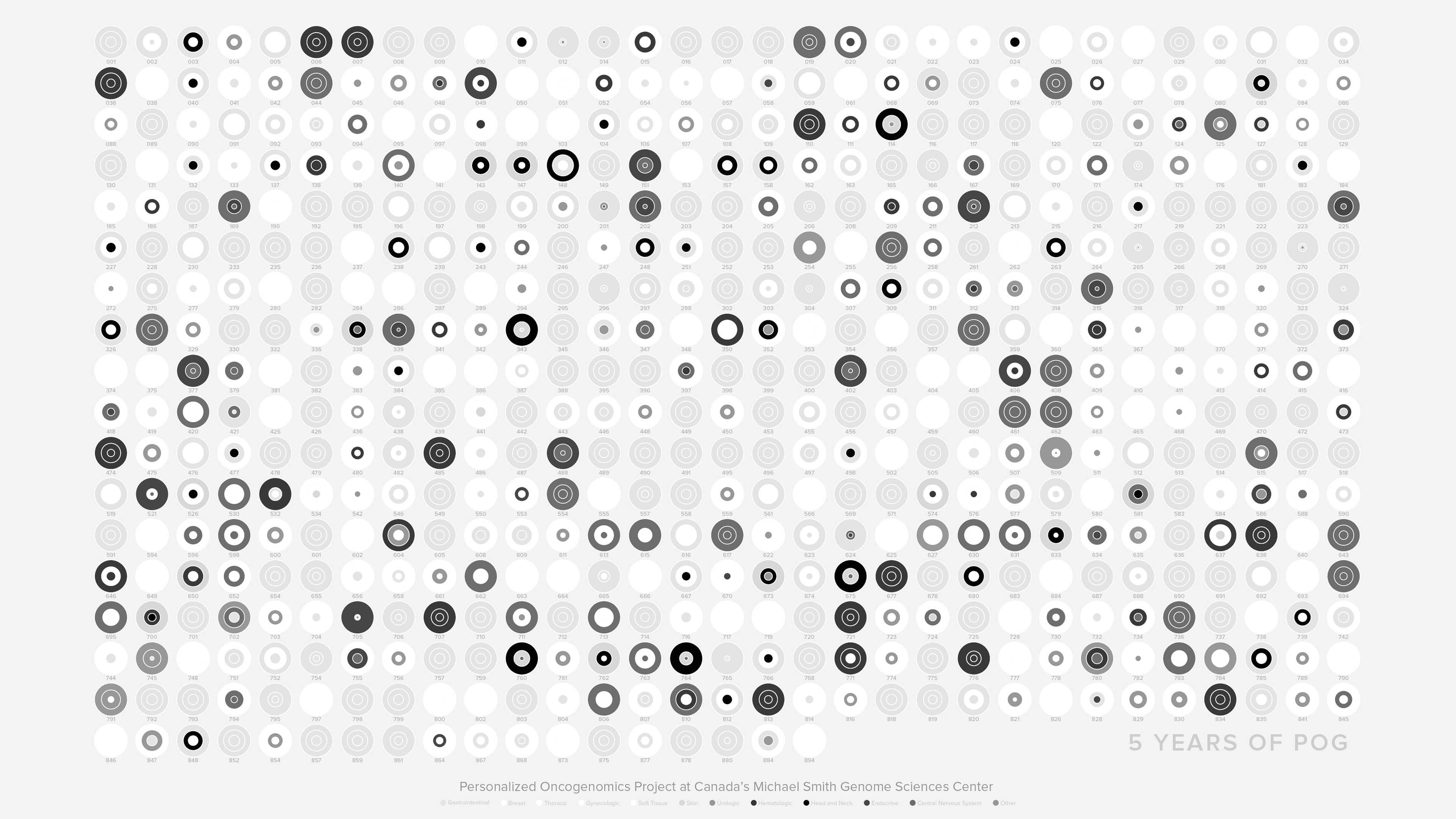
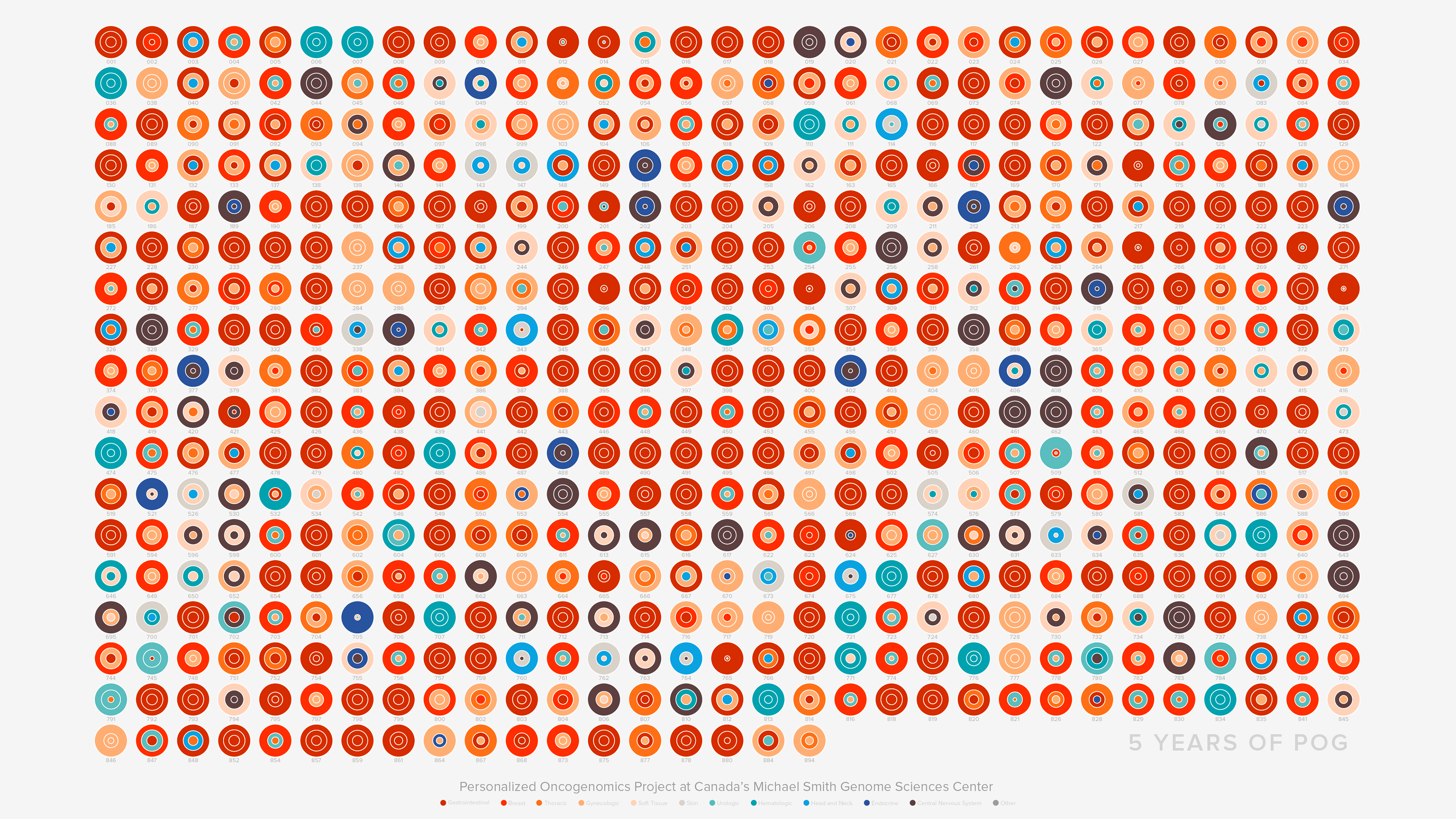
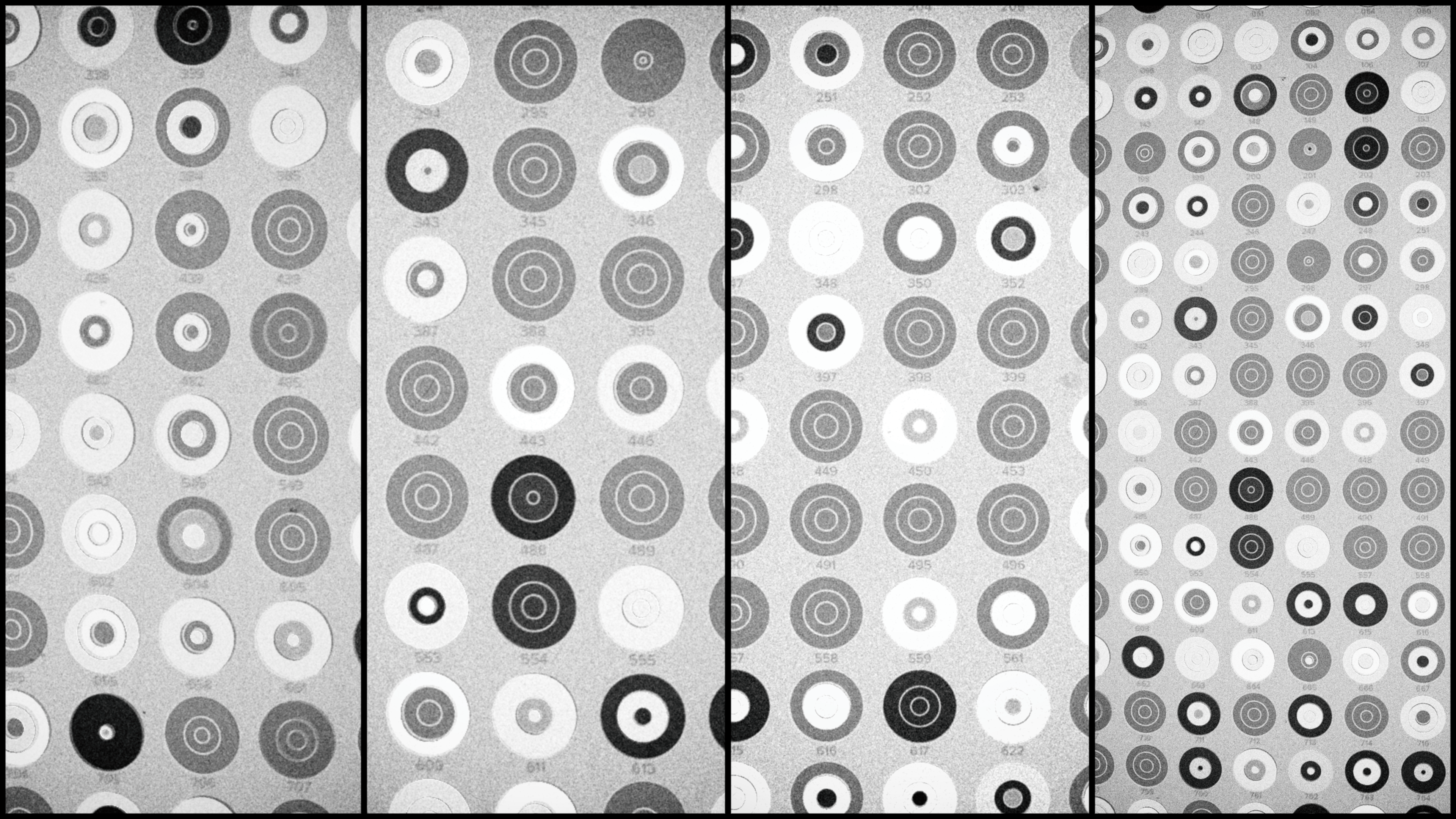
This year, the cyclists in the Ride to Conquer Cancer will not only have the chance to raise money for research (as they've always done) but also do so while wearing data (as they've never done before).
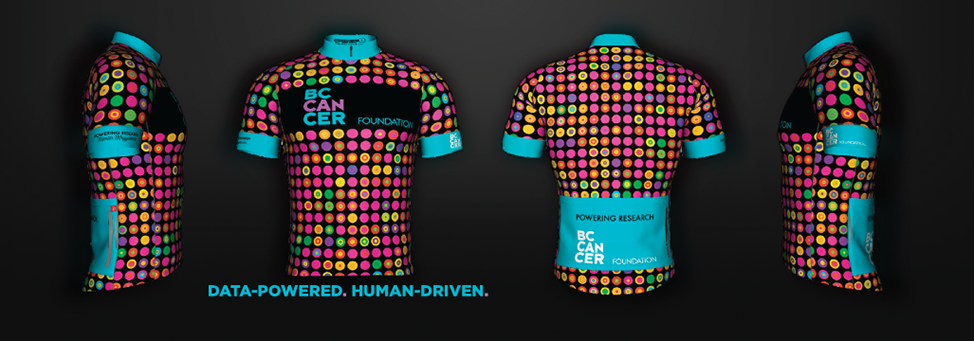
You can purchase your own data-powered and human-driven cycling jersey.
Nasa to send our human genome discs to the Moon
We'd like to say a ‘cosmic hello’: mathematics, culture, palaeontology, art and science, and ... human genomes.



Comparing classifier performance with baselines
All animals are equal, but some animals are more equal than others. —George Orwell
This month, we will illustrate the importance of establishing a baseline performance level.
Baselines are typically generated independently for each dataset using very simple models. Their role is to set the minimum level of acceptable performance and help with comparing relative improvements in performance of other models.

Unfortunately, baselines are often overlooked and, in the presence of a class imbalance5, must be established with care.
Megahed, F.M, Chen, Y-J., Jones-Farmer, A., Rigdon, S.E., Krzywinski, M. & Altman, N. (2024) Points of significance: Comparing classifier performance with baselines. Nat. Methods 20.
Happy 2024 π Day—
sunflowers ho!
Celebrate π Day (March 14th) and dig into the digit garden. Let's grow something.

How Analyzing Cosmic Nothing Might Explain Everything
Huge empty areas of the universe called voids could help solve the greatest mysteries in the cosmos.
My graphic accompanying How Analyzing Cosmic Nothing Might Explain Everything in the January 2024 issue of Scientific American depicts the entire Universe in a two-page spread — full of nothing.
The graphic uses the latest data from SDSS 12 and is an update to my Superclusters and Voids poster.
Michael Lemonick (editor) explains on the graphic:
“Regions of relatively empty space called cosmic voids are everywhere in the universe, and scientists believe studying their size, shape and spread across the cosmos could help them understand dark matter, dark energy and other big mysteries.
To use voids in this way, astronomers must map these regions in detail—a project that is just beginning.
Shown here are voids discovered by the Sloan Digital Sky Survey (SDSS), along with a selection of 16 previously named voids. Scientists expect voids to be evenly distributed throughout space—the lack of voids in some regions on the globe simply reflects SDSS’s sky coverage.”
voids
Sofia Contarini, Alice Pisani, Nico Hamaus, Federico Marulli Lauro Moscardini & Marco Baldi (2023) Cosmological Constraints from the BOSS DR12 Void Size Function Astrophysical Journal 953:46.
Nico Hamaus, Alice Pisani, Jin-Ah Choi, Guilhem Lavaux, Benjamin D. Wandelt & Jochen Weller (2020) Journal of Cosmology and Astroparticle Physics 2020:023.
Sloan Digital Sky Survey Data Release 12
Alan MacRobert (Sky & Telescope), Paulina Rowicka/Martin Krzywinski (revisions & Microscopium)
Hoffleit & Warren Jr. (1991) The Bright Star Catalog, 5th Revised Edition (Preliminary Version).
H0 = 67.4 km/(Mpc·s), Ωm = 0.315, Ωv = 0.685. Planck collaboration Planck 2018 results. VI. Cosmological parameters (2018).
constellation figures
stars
cosmology
Error in predictor variables
It is the mark of an educated mind to rest satisfied with the degree of precision that the nature of the subject admits and not to seek exactness where only an approximation is possible. —Aristotle
In regression, the predictors are (typically) assumed to have known values that are measured without error.
Practically, however, predictors are often measured with error. This has a profound (but predictable) effect on the estimates of relationships among variables – the so-called “error in variables” problem.

Error in measuring the predictors is often ignored. In this column, we discuss when ignoring this error is harmless and when it can lead to large bias that can leads us to miss important effects.
Altman, N. & Krzywinski, M. (2024) Points of significance: Error in predictor variables. Nat. Methods 20.
Background reading
Altman, N. & Krzywinski, M. (2015) Points of significance: Simple linear regression. Nat. Methods 12:999–1000.
Lever, J., Krzywinski, M. & Altman, N. (2016) Points of significance: Logistic regression. Nat. Methods 13:541–542 (2016).
Das, K., Krzywinski, M. & Altman, N. (2019) Points of significance: Quantile regression. Nat. Methods 16:451–452.
Convolutional neural networks
Nature uses only the longest threads to weave her patterns, so that each small piece of her fabric reveals the organization of the entire tapestry. – Richard Feynman
Following up on our Neural network primer column, this month we explore a different kind of network architecture: a convolutional network.
The convolutional network replaces the hidden layer of a fully connected network (FCN) with one or more filters (a kind of neuron that looks at the input within a narrow window).
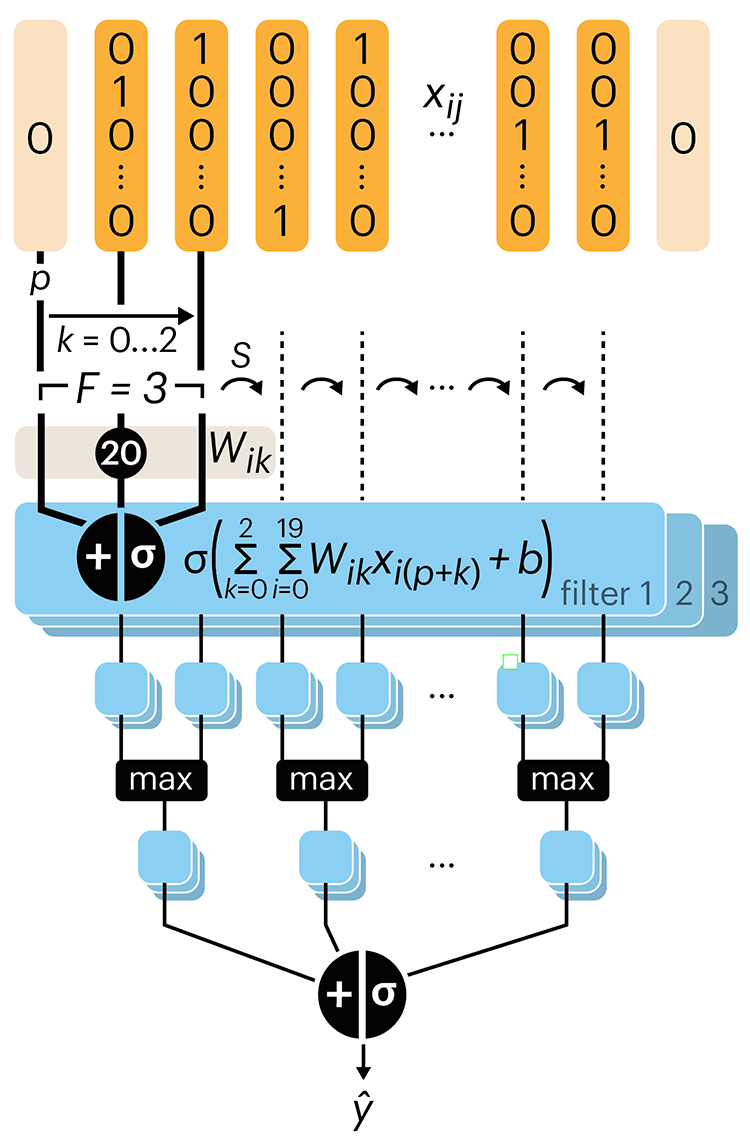
Even through convolutional networks have far fewer neurons that an FCN, they can perform substantially better for certain kinds of problems, such as sequence motif detection.
Derry, A., Krzywinski, M & Altman, N. (2023) Points of significance: Convolutional neural networks. Nature Methods 20:1269–1270.
Background reading
Derry, A., Krzywinski, M. & Altman, N. (2023) Points of significance: Neural network primer. Nature Methods 20:165–167.
Lever, J., Krzywinski, M. & Altman, N. (2016) Points of significance: Logistic regression. Nature Methods 13:541–542.



